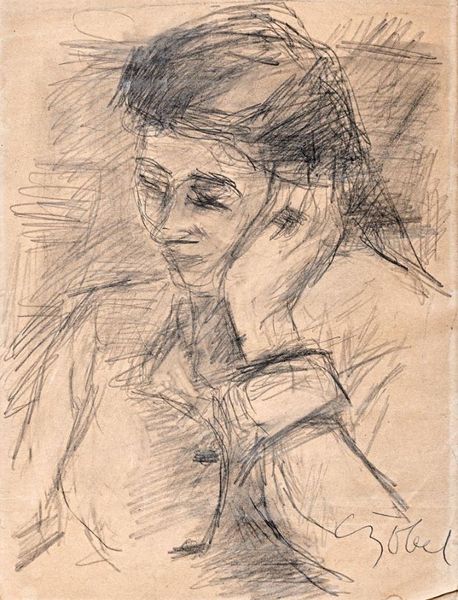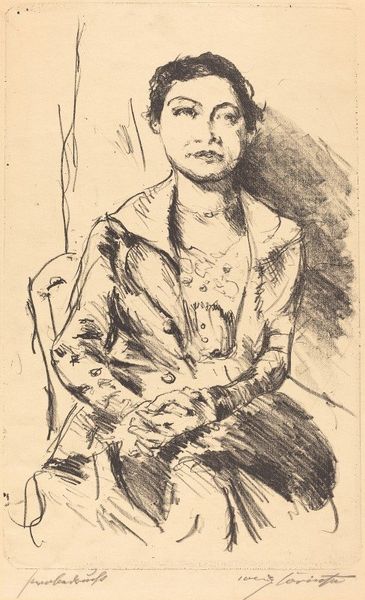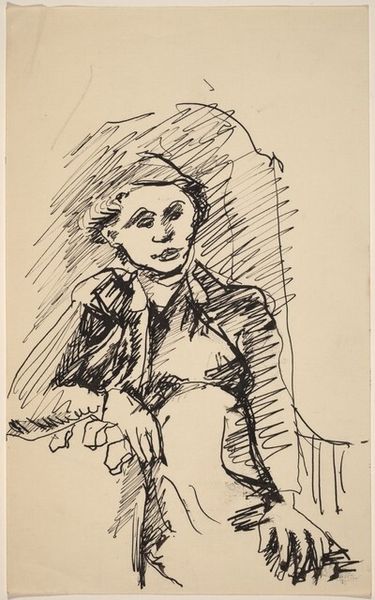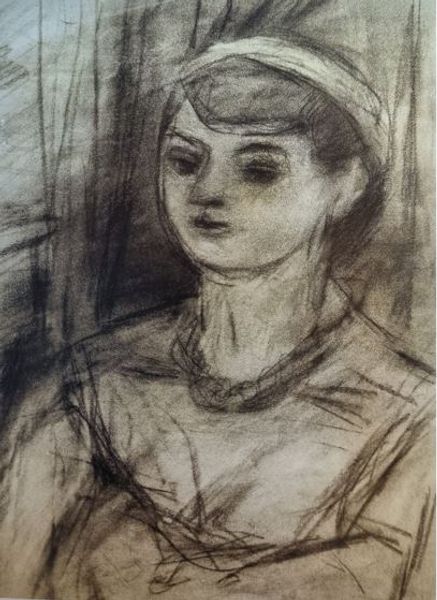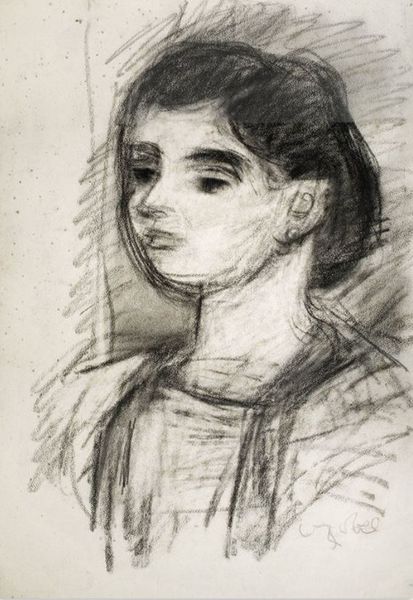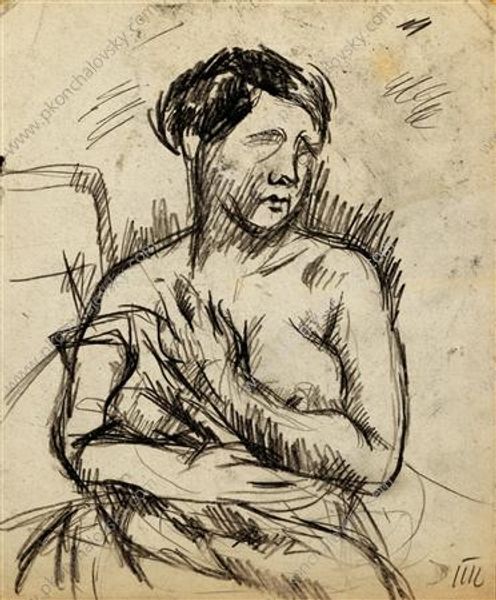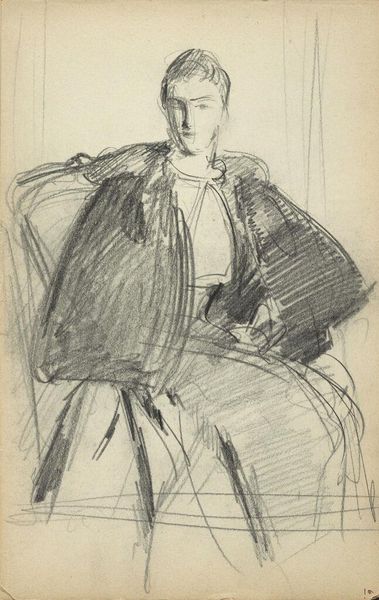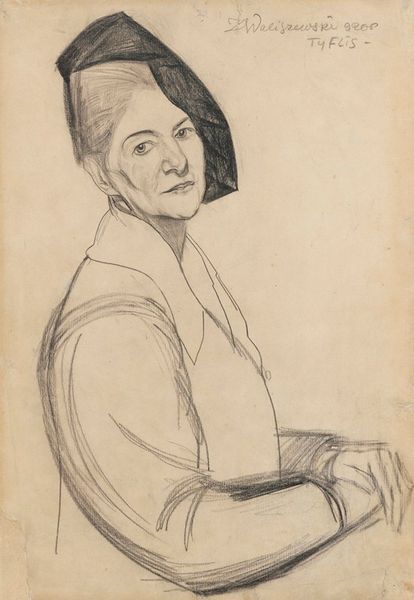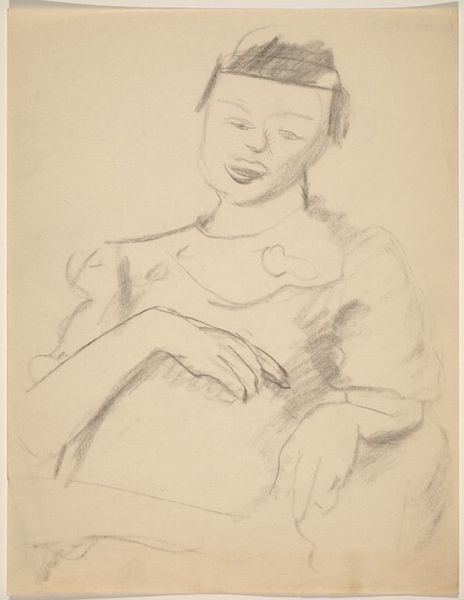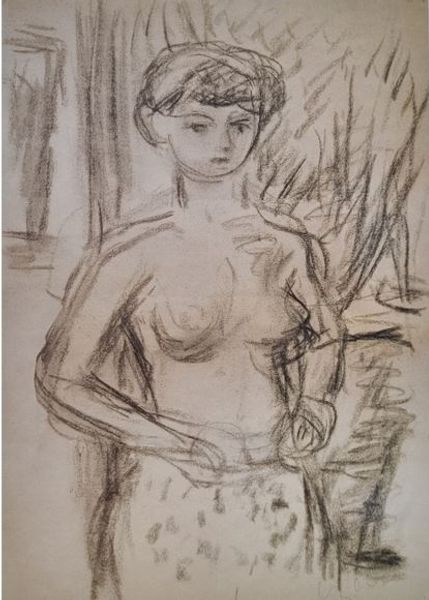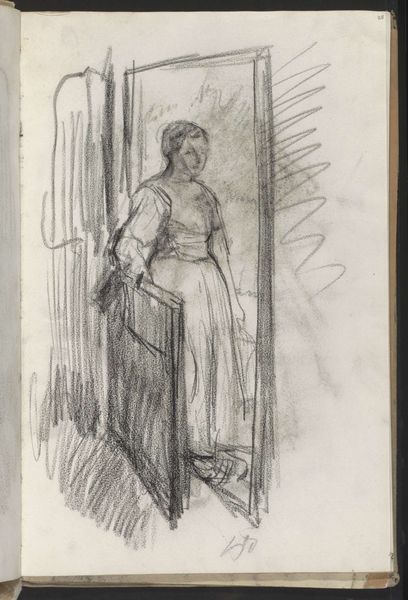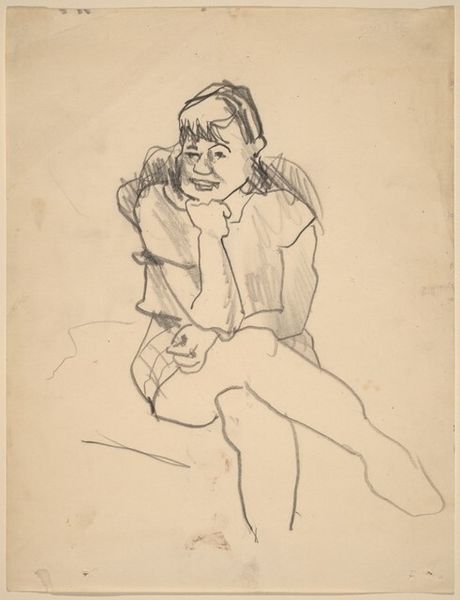
drawing, paper, charcoal
#
drawing
#
pencil sketch
#
charcoal drawing
#
figuration
#
paper
#
portrait drawing
#
charcoal
Copyright: Bela Czobel,Fair Use
Curator: Here we have Czóbel Béla's "Nő Kalapban", created using charcoal and pencil on paper. It measures approximately 60 by 40 centimeters. Editor: There’s an immediate sense of melancholy that pervades this piece, isn't there? The charcoal rendering gives the subject a quiet, almost contemplative presence. Curator: Precisely. The loose charcoal strokes speak volumes. Czóbel, as a key figure in the Hungarian avant-garde, frequently returned to figurative work like this, exploring the emotional weight of the individual. It calls back to old traditions through contemporary experience. Editor: And it really feels like we’re catching a glimpse of someone during an introspective moment, doesn't it? Her averted gaze, the gentle clasp of her hands...I’m wondering about the socioeconomic context here—is she working class? The hat seems…purposeful. Curator: That's a perceptive point. Head coverings can definitely represent social position. In much of Czóbel’s portraiture, his figures possess a similar stoicism that challenges bourgeois concepts, though class status is always ambiguously coded in clothing. Editor: There's an intentional roughness in the linework that also speaks volumes, almost a deconstruction of the classical portrait. It avoids idealization, suggesting a certain raw honesty. Do you see echoes of the emerging social realism of the time? Curator: Certainly, although Czóbel largely eschewed rigid doctrines of social realism in favor of something more subjective, emotional. The simplified forms serve less as social commentary and more as an attempt to distill essence. What visual markers persist, what makes this "portraiture?" Editor: It’s compelling how the ambiguity allows the viewer to project so much of their own feelings onto the figure. And I appreciate the way Czóbel leaves sections unfinished, emphasizing the process. Curator: Those deliberate erasures create this layered reading over time; the ghosted marks that appear across the image lend that feeling of incompleteness to the sitter. They reveal palimpsests, how meanings change as they’re reworked through new forms of life. Editor: I'll certainly be considering the historical moment differently after encountering this work. It complicates so many traditional notions we hold dear about both portraits and their presumed subjects. Curator: I agree. This piece offers a window into the soul but also prompts questions regarding visual art's role in shaping individual identity. It feels like something deeply personal that transcends its historical moment.
Comments
No comments
Be the first to comment and join the conversation on the ultimate creative platform.
